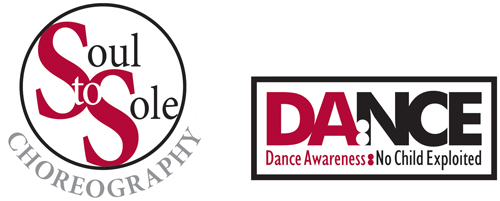 The hypersexualization of women in our Western world has a long, prevalent and unfortunate history. Sadly, in fact, it is not difficult to verify the tragic pattern of this exploitation. According to a plethora of research on this topic, the evidence that women are sexualized in print and television advertisements, music videos, video games and the Internet is undeniable (Gow, 1996; Grauerholz & King, 1997; Krassas, Blauwkamp, & Wesselink, 2001).
The hypersexualization of women in our Western world has a long, prevalent and unfortunate history. Sadly, in fact, it is not difficult to verify the tragic pattern of this exploitation. According to a plethora of research on this topic, the evidence that women are sexualized in print and television advertisements, music videos, video games and the Internet is undeniable (Gow, 1996; Grauerholz & King, 1997; Krassas, Blauwkamp, & Wesselink, 2001).
When discussing the topic of “Sexualization” we need to have a clear definition of what the term “Sexualization” means. According to the American Psychological Association (APA), sexualization occurs when, “ A person’s value comes from his or her sexual appeal or behavior, to the exclusion of other characteristics; A person is held to a standard that equates physical attractiveness (narrowly defined) with being sexy; A person is sexually objectified—that is, made into a thing for others’ sexual use, rather than seen as a person with the capacity for independent action and decision making; and/or sexuality is inappropriately imposed upon a person.” According to the APA only one of these four conditions need be present for the indication of sexualization to be present (APA Task Force on the Sexualization of Girls, 2007).
In both the research and our everyday lives, we see the objectification of women—sexualizing them for someone else’s gain (often monetary, i.e., making money for a product). And unfortunately, we are also witnessing the increase in the objectification and sexualization of our teenage and young girls—often referred to as hypersexualization.
In a longitudinal study (covering a 40-year period) researchers, O’Donohue, Gold, and McKay (1997) tracked advertisements in five different magazines for the portrayal of men, women and children in a sexualized manner. The outcome showed an upward trend in sexualized magazine ads—including the sexualization of young girls.
Within the field of psychology, psychologists and therapists alike are recognizing the need for research in the area of sexualization of girls. And according to the APA the need for research in this area is great (APA, 2007). But without much effort, the general public and casual consumer can readily witness the rapid increase of young girls being sexually objectified in dance, beauty pageants, magazines, etc. For instance, in the case of girls’ competitive dance, young girls are fitted with revealing and “sexy” dance costumes (some of the dance bikini tops are padded, creating the appearance of developed breasts in prepubescent girls). These girls are also taught choreography by adult choreographers that include sexualized moves such as Twerking, seductive posturing of the body and other movements that should cause any adult to feel uncomfortable.
Women and girls are also objectified in print. For instance, some advertisements have created a “young girl image”—such as grown women posing with their hair in ponytails and holding lollipops. Advertisements also target teenage and young girl populations, using young girl models dressed in clothing to appear sexy and seductive. These types of images also appear on television commercials, music videos and on the internet—all for public consumption.
Some (such as talent agents, publishing company insiders, modeling agency executives, etc.) may suggest that these advertisements and images are innocent; however, as a clinical psychologist and therapist, I would strongly argue against that claim. Allow me to explain my argument and concerns (including my angst with the girls’ dance competitions and girls’ beauty pageants, where girls are dressed in revealing outfits accompanied with sexually seductive dance/walk movements).
Before making my case, let us first return to the definition of “Sexualization” as outlined by the APA– specifically, the latter of the four definitions offered: “Sexuality is inappropriately imposed upon a person.” This type of sexualization (APA) is most clearly and commonly seen with our young girls in advertisements, dance competitions and beauty pageants. The girls participating in these activities and events are following the guidance and instructions of the adults around them, i.e., talent agents, parents and choreographers. The girls are instructed on what outfits to wear, make-up/hairdos, and specific choreographed movements they are to perform. This is where “Sexuality is inappropriately imposed upon them.”
My argument against advertisements and activities using girls, for profit and for sport or entertainment, is based on the consequences that sexualization has on our teenage girls and younger girls. In my work as a therapist, working for many years with young women, teens and young girls, I have observed an overwhelming amount of anecdotal evidence suggesting that the sexualization of girls has a long and damaging effect on healthy psychological development and well-being. I have noted through the years, for instance, the low self-worth and poor self-image in girls who have been sexually objectified. I have also witnessed eating disorders, anxiety disorders and depressive disorders in women and girls who have been subjected to sexualization.
Beyond the anecdotal evidence that I have personally experienced in my work, I have kept informed of the current empirical research on this extremely important topic. Found within the research is an abundance of evidence indicating the types of negative effects sexualization has on girls and women. Specifically, women and girls’ cognitive functioning, physical and mental health, sexuality, and attitudes and beliefs suffer the greatest (APA, 2007).
According to the research, sexualization has a direct and documented correlation with three common mental health problems: eating disorders, low self-esteem and depression (Abramson & Valene, 1991; Durkin & Paxton, 2002; Harrison, 2000; Hofschire & Greenberg, 2001; Mills, Polivy, Herman, & Tiggemann, 2002; Stice, Schupak-Neuberg, Shaw, & Stein, 1994; Thomsen, Weber, & Brown, 2002; Ward, 2004).
The findings in these studies are supported in the research literature by other scientific investigators confirming the notion that the sexualization and sexual objectification of girls in various settings can have a negative and lasting impact. In light of this truth, I write this article to create awareness of the need for continued research, education and public enlightenment. And armed with this knowledge, we can work collaboratively to protect our girls from objectification and sexualization—ensuring the benefits of a physically and psychologically healthy development as they enter womanhood.
—–
Dr. Tammy Bradshaw-Scott is an inspirational speaker, gifted writer and adjunct professor who holds two Master’s Degrees and a Ph.D. Degree in Clinical Psychology. Dr. Bradshaw-Scott is the creator, producer and host of “A New Day” with Dr. Tammy—a program dedicated to offering hope, resources and insight for her viewing audiences. “A New Day” airs on Smart Lifestyle Television with the Loma Linda Broadcasting Network and on Dr. Bradshaw-Scott’s YouTube Channel.
Dr. Bradshaw-Scott is a Clinical Psychologist and Licensed Marriage and Family Therapist, currently seeing patients in her private practice, Grace Counseling Services, LLC located in Redlands, CA.
She has worked as a psychotherapist in a variety of Behavioral Health settings including adult forensics, Behavioral Health hospitals and in clinics working with underserved populations. She has provided psychotherapy, psychological assessments, and treatment for children, adolescents, adults and geriatrics.
Dr. Bradshaw-Scott recently completed her book, Saving Grace; A Journey of Hope and Healing where she shares her personal struggle and journey through the loss of her 20-year-old daughter. Due out early Fall 2019.
The website for “A New Day” is www.drtammynewday.com, and she can be reached by emailing her at tbradshawscott@gmail.com
